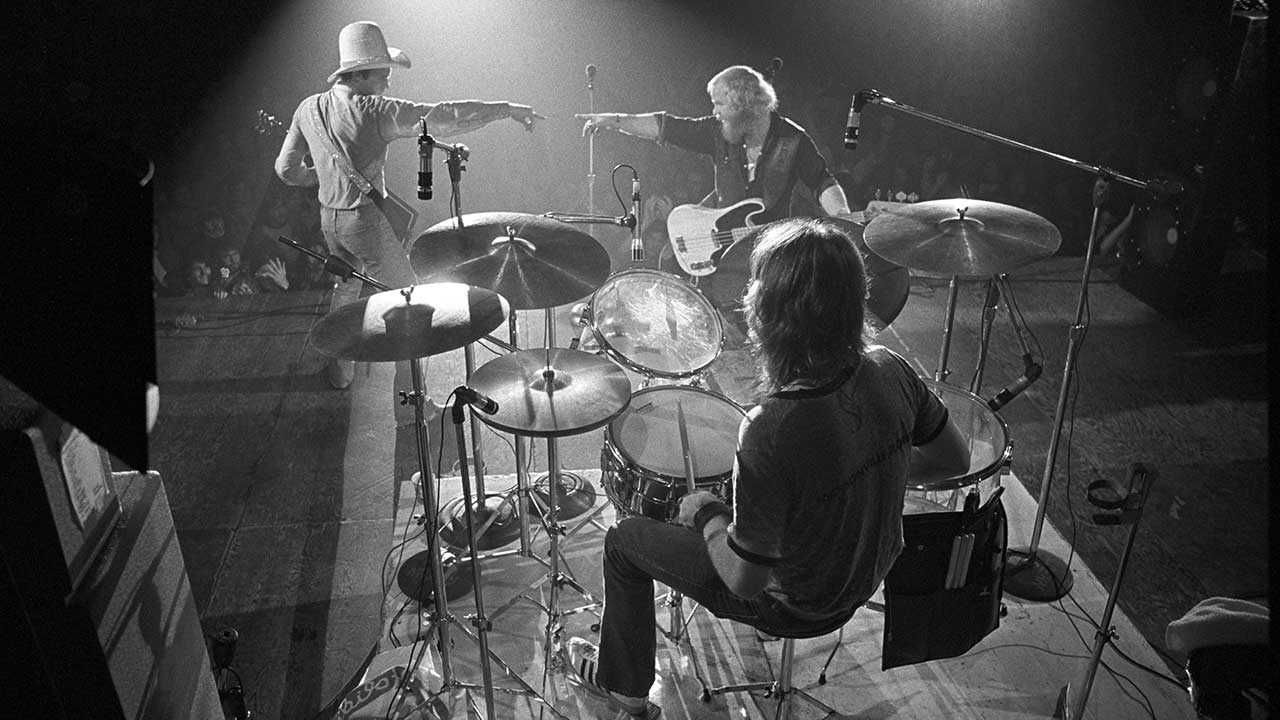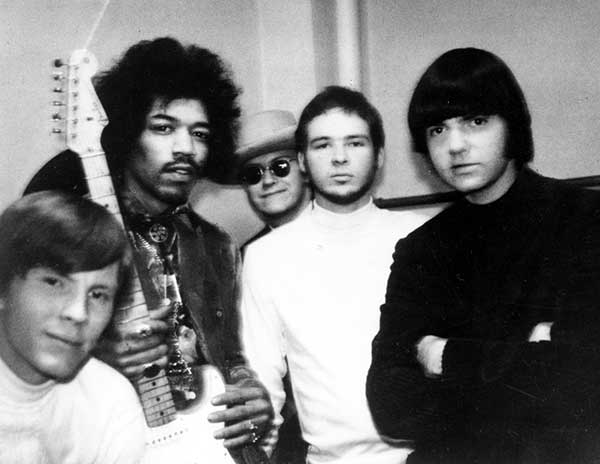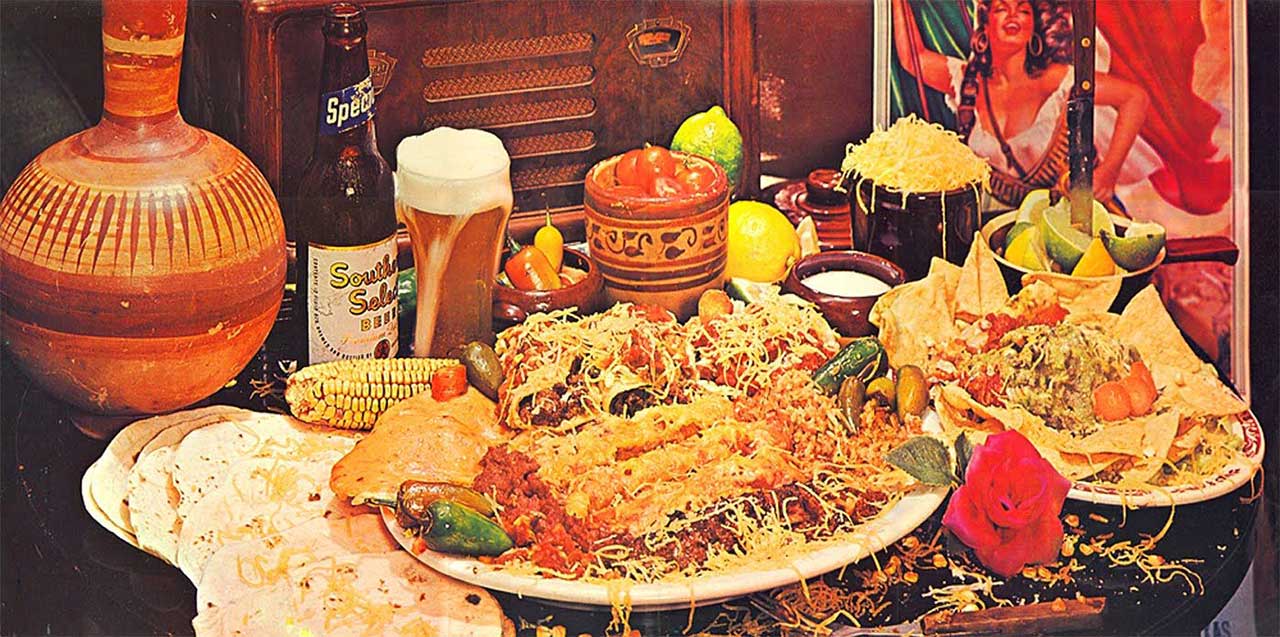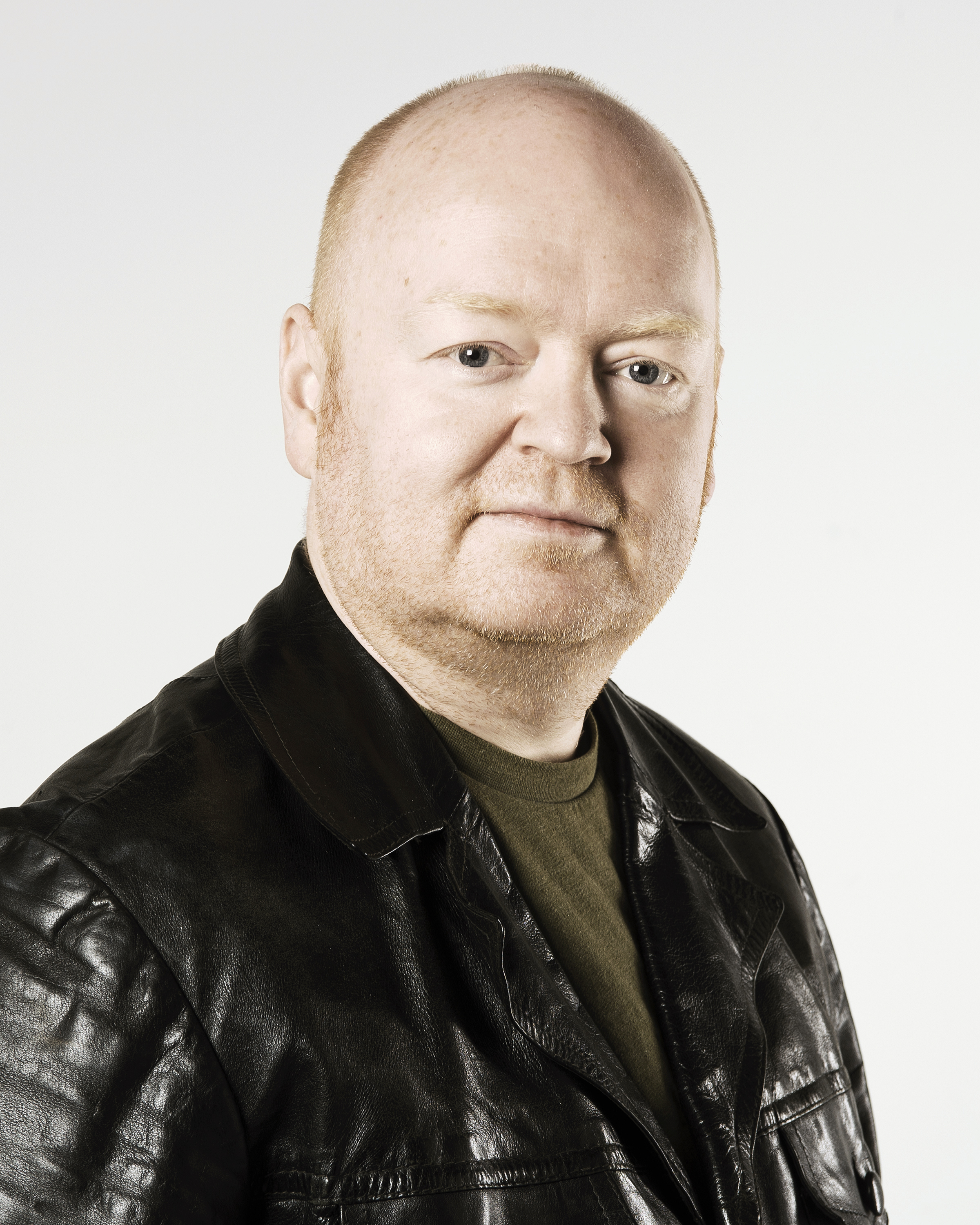Blues, beer and burritos: How ZZ Top made Tres Hombres
ZZ Top’s Tres Hombres transformed them from that Little Ol’ Band From Texas into a phenomenon, putting the Lone Star State back on the musical map as they defined the sound of Texan blues

In 1973, ZZ Top recorded a John Lee Hooker-flavoured boogie for what would become their groundbreaking third album, Tres Hombres. Driven by a rhythm that could piledrive through concrete walls, La Grange has since been described by the band’s guitarist and leader Billy Gibbons as “a defining moment”.
It could scarcely have come along at a better time. The blues in Texas was just ticking over. The old guard were dragging themselves around the same old venues, and the Lone Star State’s brightest hope, Johnny Winter, had moved north to find his audience. So, a pre-beards and pro-nudie suit ZZ Top – Billy G, bassist Dusty Hill and drummer Frank Beard – were left to mind the store.
As Gibbons intoned those Hooker-esque ‘How, how, how, how’s on La Grange, there was no doubt that the Little Ol’ Band From Texas were open for business. Tres Hombres put Texas blues on the map – and defined the Lone Star State’s sound to the rest of the world in the process. Everything the band had done so far had been leading up to that album’s release.
“Dusty and I played with the American Blues in Dallas, Billy played with the Moving Sidewalks outta Houston,” Beard says of the Top’s origins. “Course, we knew of each other, and came the time that I needed a job I went to Houston in a Volkswagen with a set of drums and said: ‘Hey, hire me!’ So that’s how I met Billy.”
Hill takes up the story: “I moved to Houston not knowing Frank was down there. I was playing in some club, and Frank just accidentally walked in. He said: ‘You gotta come play with this guy’ [Gibbons], and I said okay.”
“I later apologised for that!” Beard says with a laugh.

Things started to happen for ZZ Top when Texan music impresario Bill Ham happened upon the band and offered his services as their manager. He would go on to produce their albums.
Sign up below to get the latest from Classic Rock, plus exclusive special offers, direct to your inbox!
“He wandered by the rehearsal hall, and there was quite a clatter going on,” Gibbons recalls. “He kinda liked what he heard, and handed us each a cigar and said: ‘Boys, I’m gonna make you stars!’”
“It didn’t hurt that he had John Mayall as a house guest at the time either,” Beard says. “Kinda impressed us.”
Ham said all the right things, claiming he could get the band a deal with London Records.
“The Rolling Stones had been on London, and we thought that was real cool,” says Hill. “So Ham did his thing up there and got us on the label. We cut the first album and travelled with it.”
It was thanks to the band’s new manager that the trio found themselves a ‘home’ at The Warehouse, a 30,000-square-foot music venue on Tchoupitoulas Street in New Orleans.
The Grateful Dead, Fleetwood Mac and The Flock opened The Warehouse in January 1970. Jim Morrison played his last show with The Doors there. The Dead and the Allman Brothers were busted by the NOPD when they came to the city to play The Warehouse. Now demolished, it was a lively joint by all accounts.
“It was the hottest place in town,” remembers local musician Deacon John Moore. “People was lightin’ up reefers and nobody said shit. It was like heaven.”
Gibbons: “The first night we played there the roof blew off…”
Hill: “We thought we did it!”
Gibbons: “A hurricane had come through New Orleans and literally took the roof off our heads. We knew we had found the right place to play!”
“Bill conned Don Fox, who owned it, into letting us play there,” Hill continues. “He didn’t really know us. It was Mardi Gras, so there was no place to stay at all in New Orleans. So we slept there, up in the dressing room. Don Fox was suspicious. He would put a guard on us so that we wouldn’t be dragging women in there.”

ZZ Top released two albums prior to Tres Hombres: 1971’s ZZ Top’s First Album, and the following year’s Rio Grande Mud, both produced by manager Bill Ham. It was as they worked on their third album that they first crossed paths with Terry Manning, the record producer, songwriter, photographer, recording engineer and artist.
A quick dip into Manning’s enormous list of credits reveals that he was part of the production team at Stax Records in Memphis that had worked their magic on Staple Singers classics Respect Yourself and I’ll Take You There.
Even better, in Billy Gibbons’s mind, Manning had engineered Led Zeppelin’s third album. “I was a big fan [of ZZ Top],” Manning told The Blues magazine. “I had really liked the first two albums, and had actually put out feelers to the band that I was interested in working with them. And it turned out that Billy Gibbons had heard that I’d engineered and essentially mixed the Led Zeppelin III album, which was doing so well.
"Billy just loved the sound of that, and it turned out that he was also putting out feelers to work with me. So I wasn’t surprised at the quality of the songs they were playing, or the sound. I was already a fan. And it’s always really nice when you can work on something you really love like that.”
Manning already had a sonic ideal in mind for his debut with the Top: “I wanted the band to sound powerful and tight and just sonically as pure as possible. I’ll tell you the philosophy of it. To me it was very obviously blues-based, and they were doing a rock’n’roll-band style of as pure blues as you can fit into that. I think they probably did that particular thing better than anybody ever did it.
“I wanted to keep the blues element, which is the grit and the grunge, where things aren’t perfect, but I wanted to fit it into that highly technical framework where things were perfect in certain ways: sonically, timing-wise. When you try to marry two things together like that, sometimes it can be a disaster, but I think in our case we were fortunate that it did work.
“That album is very big, to me, when I listen now. It’s big, powerful and tough-sounding. It reaches enough levels of sonic purity to be pleasing to me in that way, but it’s also down and dirty and funky. I think it marries pretty well.
“My first meeting was with Billy and Bill Ham,” Manning continues. “I didn’t meet the whole band the first time. That’s when Billy brought the tapes in. The impression you get meeting Billy – then and probably now – has always been that he’s an incredibly intelligent person.
"Of course, he’s a nut – in a great way! We’re all nuts in the music business. He’s got his own flamboyance and way of doing things, but underneath that is a very intelligent, philosophically-based person who is interested in the world and the ethereal things just as much as the things that you can reach right out and see and touch.
"And I think it shows in his writing and playing especially. There’s quite a depth there. So it was impressive to meet him. And of course Bill Ham was this incredibly astute businessman, and very aware of the things he wanted to do to move the band through level after level in the music business. So that was a great meeting. I didn’t meet the other two guys until the next album [1975’s Fandango!]. But we all had a lot of fun. They were just happy-go-lucky guys."
The initial Tres Hombres band tracks were done at Robin Hood Studio in Tyler, Texa, Manning recalls. “Then they brought the tapes to me and I did some overdubs, all mixing, editing and sequencing at Ardent Studio A in Memphis. So I wasn’t there for the early tracking. But in that era they would do several takes until they felt they’d got into the song, and there would be overdubs – tom rolls on certain things, and double-tracks, some solos and vocals were overdubbed – and a little editing done.
"So it wasn’t all live, but it was, I think, the time when the band played best together as a three-piece live. And it had the live feel, but in enough of a structured way to really bring it to a professional level.”
What prompted the move from ZZ’s familiar surroundings of Texas to Memphis, Tennessee?
“We’ve always ascribed to the old phrase: ‘T for Texas, T for Tennessee’,” says Gibbons. “There was something about it. We could never quite figure it out. We decided to go and check it out. I suppose by sticking in Memphis it offered us a little psychological advantage of maybe getting away from the house for a while.
"When you get into Memphis and you start breathing that air and you feel that musical vibe hit you, it inspires you to write. There’s just something that comes over you. I don’t know if it’s this lineage of rich musical heritage. It’s still there. So we go up and live it, breathe it and see what we can do with it.”
It seems to have helped. The work ethic on Tres Hombres was strong.
“We’d usually get started after noon,” says Manning.“Probably going until midnight. But sometimes Billy and I would stay on for hours at night, just the two of us. Or sometimes I would stay for hours, working on things for the next day. But mostly I’d say we were working ten- or thirteen-hour days. Sometimes it’ a sixteen-hour day. But what kept you going was just the music.”
The fact that Gibbons knew exactly what he wanted helped the sessions barrel along, even if there was the occasional glitch. Manning says of Gibbons: “He does – and did – have quite strong opinions, but we never had a problem reaching them. One time, I remember accidentally punching in too early or not punching out soon enough, and went over a lick he had played, and he was a little upset that guitar lick was gone!
"Of course, it happens, and I didn’t mean it. But we had very few disagreements, and even with that, he was just like: ‘Well, sure I did it once, I can do it again.’ So he did – and maybe played it even better. It all went very smoothly. “He was very interested in the technical side and, of course, he’s so incredibly intelligent that he could grasp anything. We would do things together.
"On some songs, for instance, I would be at the console – operating the equipment, the faders on the board and everything – and he would be playing guitar in the control with the lead going out to the amp in the studio. So he’s standing right next to me playing. And because he doesn’t play guitar in a normal way, sometimes there’d be a sound he could do, but he needed three hands to do it almost.
"So I would have my hand on the fretboard or my hand on the neck, or some part of the guitar – holding a string down or whatever – while he did these other things. That was kinda crazy. I’ve never done that with anyone else."

It was the perfect storm, or ‘Texas twister’. ZZ Top had a manager and producer with the drive and ambition to take the band all the way to, in the words of John Lennon, the “toppermost of the poppermost”.
They hooked up with an engineer with a clear idea of what the band should sound like. Crucially, for the first time, they had the songs that would take them and the sound of Texas blues to the world stage. This was a band with some stories to tell. There’s La Grange, which spills the beans on Miss Jessie Williams’s Chicken Ranch, an infamous brothel in La Grange, Texas, that took care of business between 1905 and 1973.
Note that last date. The place had always been illegal, but in ’73 there was a concerted campaign, led by TV reporter Marvin Zindler, to have the establishment closed down for good. The whole sorry affair was the inspiration for the ’82 Dolly Parton and Burt Reynolds vehicle The Best Little Whorehouse In Texas.
“It was about the Waldorf Astoria of whorehouses in Texas,” Gibbons told Sounds back in the mid-70s. “So posh that you couldn’t cuss or even be really drunk in front of the girls. When you reach a certain age in Texas, you can go visiting down to Mexico or make a trip to La Grange.
"At least that’s the way it was. Place got closed down soon after we wrote the song. The sheriff was so pissed [off] that he smashed all the ribs of the reporter that broke the story in the papers.”
“When we wrote the song and put it out, La Grange was still going strong,” says Frank Beard. “It seemed like maybe a month after the song came out when the local newscaster from Houston raised the big stink and got the place closed down. We kinda wrote the song as a celebration. It ended up being a eulogy.”
The Chicken Ranch was so popular that punters were following their one-track minds right to its front door more than two years after it was shut down.
“Everyone knew about the place,” Dusty Hill adds. “I mean, it was no secret. This guy that caused the stir about it was doing just that – causing a stir. We had a couple of people blame us for the closing, but we didn’t let any cats out of the bag or anything. I think that was already in the works. We didn’t know about it.”
“I remember La Grange quite well,” Terry Manning says of the song’s birth, not the ranch. “It immediately shone, to me. It just had an incredible sparkle. One thing I do remember is that it was quite a trick to mix it, because Billy does so much speaking – y’know, these little asides and comments.
"There were several more on the recording, and we were trying to decide which ones to erase. I remember it was quite a hassle, manually moving everything. We worked on it until we really felt we had the definitive version, without too much of that. I remember one statement Billy made about ‘going halfway round the world and back again’. We left that one out.”
Manning recalls that another track, Master Of Sparks also has a strange tale at its heart: “I love the lead guitar on that. I remember going down the hall, to get some water or go to the rest room or something, and then coming back in the room while it was playing, and that guitar was wailing, and I was blown away a second time by coming in fresh and hearing it. I just loved how he played it.
“Billy would tell us the story behind the lyric – which he tells in the song, but you don’t quite hear it all, or understand what’s going on. This was a true event that had happened. And hearing it, and the insane teenage pranks they were doing that should not have been going on – then hearing the song about it – was very special.”
“We built a steel ball out of cage wire,” Gibbons explained to Sounds back in the day. “The thing to do on a Saturday night in Texas was to put it in the back of a pickup truck, go about sixty miles an hour and slide it out the back. Course, we kept it a secret from everybody, cos if our folks had found out we’d all have been off to military school.
“There was a seat bolted inside,” Hill adds. “Whoever was in the seat, the other ones pushed it off the back of the pickup going about sixty.”
“Sure enough,” Gibbons continues, “come sundown we got out there to find both sides of the road lined with cars waitin’ to see this. Some guy even had the back of his pickup truck loaded down with ice and cold beer – he was givin’ away free beer.
“So after realising what was coming down, both of us loaded ourselves in for the last ride, and I guess we must of been going sixty miles an hour, drunk, laughin’ like hell, and when we rolled ourselves out we hit the ground so hard it squashed the ball out like an egg.
"Needless to say it didn’t roll too well. We spun off the road and hit a fence, tore about a hundred yards of barbed wire down. I was screamin’, he was bleedin’, but needless to say we were awarded the coveted title of having done the wildest thing.”
So which of the Top ended up inside the sphere of almost certain death or injury? Dusty?
“No, that would be illegal,” he chuckles. “I’ll put it this way: I was once six-foot-three.”
Dusty Hill feels that the vibe of Tres Hombres was influenced by the border radio that owned the Southern airwaves in the 1950s and 60s.
“There were these radio stations outta Mexico – like 500,000 watts – and they’d just blanket the area way up to the Midwest,” he explains. “And you were privy to hear a lot of blues on this station that you wouldn’t hear on a regular rock’n’roll station back then. It had a lot of influence on us growing up.”
“The scam on these radio stations was that you could buy thirty minutes’ programming for anything,” adds Beard. “You could get prayer cloths signed by Jesus Christ himself, or goat gland operations to improve your sex life…”
Gibbons: “Two hundred baby chicks, three dollars.” Hill: “And they didn’t have overnight delivery back then!” Gibbons: “Yeah, things got a little dark at that end of the dial.”
One of the unusual aspects of Tres Hombres was the no-gap edit linking opening track Waiting For The Bus and the next one, Jesus Just Left Chicago.
“The songs weren’t recorded that way or planned that way,” says Manning. “But when I was sequencing the album, and we decided that one song would start and the next song would come after it, I remember really feeling those two could be like one very powerful recording.
"So I just cut it that way, like there was no space between them. It was just me, Billy and Bill in there. I think a couple of other people didn’t quite like it, and it was a shock to them because it was so abrupt-sounding. But once you’d heard it a few times, it was like, ‘I can’t hear it any other way now.’ Like it just had to be like that. So I certainly remember that. That was probably my best edit ever.”
Tres Hombres featured a feast of Tex-Mex vittles across its gatefold sleeve. The band remember that particular photo shoot very well.
Hill: “We were all there. They had to take quite a few photos because we kept nibbling at it. ‘No, it’s just for the camera.’ ‘Well, get some more!’”
Beard: “We ate that meal when it was over.” Hill: “Except for the beer, which by the time the photo shoot was over was no good.”

The brewery that supplied the beer has since gone the way of The Warehouse and the Chicken Ranch.
“We probably caused that,” Beard says, laughing. “Not the closing of La Grange. The Southern Select Brewery, maybe so… Leo’s Mexican Restaurant, that provided that food, literally kept ZZ Top alive during the first year or two that we were a band. All we had to do was present ourselves at the door and say we were hungry and they would feed us. If we didn’t have any money we’d bring it to them later.”
Hill: “Leo, the old man, actually rode with [Mexican revolutionary] Pancho Villa when he was like thirteen or something… A very interesting guy.”
Beard: “There is the Mexican girl in there [the inner sleeve], in the one little photo.”
“She was the star of the Mexican revolution,” says Gibbons. “She took a bullet yet kept her strength and sanity and held the flag that either Villa or Zapata had.”
Hill: “One of those guys, right?”
Beard: “Or both!” [They all laugh at their patchy knowledge of Mexican history.]
The album’s look and sound was undeniably bad-to-the-bone Texan, yet for some reason the band found themselves lumped in with the stars of the then exploding southern rock scene.
“They took the whole South and created a whole genre,” says Beard.
Hill: “‘Southern boogie bands.’”
Beard begins counting them off: “Lynyrd Skynyrd, the Allman Brothers, Molly Hatchet…”
Beard: “Thity-Eight Special, Point Blank…”
Hill: “They wanted to call us something.”
Terry Manning doesn’t buy the comparison with the southern rock bands either. “Nobody plays quite like Billy,” he offers. “I guess nobody played quite like any of the three of them at that point. But he sorta rises above the greatness of all of them, really, to my ears, in that he just does not play guitar the same way that other people played it then – and really, most people still don’t play it that way.
“It did sound different. It didn’t sound like Led Zeppelin. Even though I mixed them both, on very similar equipment, they don’t sound the same at all. It’s not about me, and it’s never about equipment or mics or consoles or anything like that. It’s always about the band and the artist.
“My job has always been to take a band and just make them the best version they can be, of what they are, without imposing on them what I want or what anyone else wants. So yeah, I think Tres Hombres does sound different from any other album of that era. There have been copycat things and tribute bands that have tried to achieve that since.”
The album wasn’t just a big hit with the punters – Gibbons, for one, loved the way it turned out. It’s no accident that Manning went on to work with the tres hombres of ZZ Top for years after they made that landmark third record. He also engineered their biggest hit to date, the ’86 colossus Eliminator, the band’s eighth studio record.
“I’ve got this beautiful postcard that Billy sent me when he got back home and really stopped and listened,” says Manning. “He was just so thrilled with it. I did know at the time that this was not going to be a run-of-the-mill everyday album.
“On the Eliminator album, I remember saying to several people: ‘I guarantee you, this will be a huge hit.’ I rarely say that, but in the case of Eliminator I absolutely felt it. And on Tres Hombres I had a real good feeling about it. I just knew this would push them up.”
“For me, it was the high point of several things coming together,” says Manning. “Previous to Tres Hombres, the band had recorded and mixed in different places, but this [album] was running at a higher level of technical expertise and quality equipment. Plus the band had been together, had been through the recording process twice before, and they had it down.
"They were really burning on all cylinders by that point. It was the highlight of their era of playing together. A few later albums were also great, but they didn’t quite have that early fire still going, maybe – or at least all the players might not have.
“Tres Hombres is really one of their two high points,” Manning continues. “Later on, we went to more modern techniques of recording. I’m talking about Eliminator. It wasn’t worse – it was a great album, and it sold even more – but it didn’t have that togetherness, with everyone really firing it out, in a rock-blues kinda way.
“Eliminator was much more Billy and me doing things after hours, kinda overdubbing things, rather than just the band playing. Tres Hombres was almost like an incredible live performance. Of course, it wasn’t live – they were overdubbing things – but it was much more of the band at their absolute playing-together height.
“So I have two favourites, and I can’t choose. It’s like choosing your favourite son. Tres Hombres being the band at their powerhouse live height, and then Eliminator for their new style, with the machines added and the new production, but still maintaining the blues and rock element.”

Today, nearly half a century on, they might have a few more bundles in the bank, and Billy Gibbons and Dusty Hill have remained committed to their trademark facial hair – while Frank Beard famously hasn’t – but they’re still the Little Ol’ Band From Texas.
“We played pretty close to Texas for a good while – Louisiana, Oklahoma,” says Hill. “When we started getting up north, most people expected us to move to LosAngeles or New York, because that’s just the way it was done back then.” That wasn’t on the cards, of course. And it shouldn’t come as a surprise that the three amigos who, in the words of Texan radio DJ Redbeard, “spent four decades taking Texas to the world”, have stayed faithful to their original line-up.
“We’ve done this band longer than we’ve done anything else,” says Beard. “Longer than we went to school, certainly longer than any marriage that I’ve had. I mean, it is like being married to these two guys.
"It just goes to the fact that we’ve always stayed true to what we wanted to do, which was just play music and have a good time and try not to make it any harder than that.”
Interviews by Redbeard & Henry Yates. Many thanks to Redbeard, Mark Fischer and Terry Manning for their contribution to this feature. The ZZ Top interview was sourced at In The Studio with Redbeard.

Ed Mitchell was the Editor of The Blues Magazine from 2012-16, and a contributor to Classic Rock and Louder. He died in October 2022, aged 52. A one-time Reviews Editor on Total Guitar magazine from 2003, his guitar-modding column, Ed’s Shed, appeared in print on both sides of the Atlantic (in both Total Guitar and Guitar World magazines), and he wrote stories for Classic Rock and Guitarist. Between them, the websites Louder, MusicRadar and Guitar World host over 400 of his articles – among them interviews with Billy Gibbons, Paul Weller, Brian Setzer, profiles on Roy Buchanan, Duane Allman and Peter Green, a joint interview with Jimmy Page and Jack White, and dozens of guitar reviews – and that’s just the ones that made it online.
